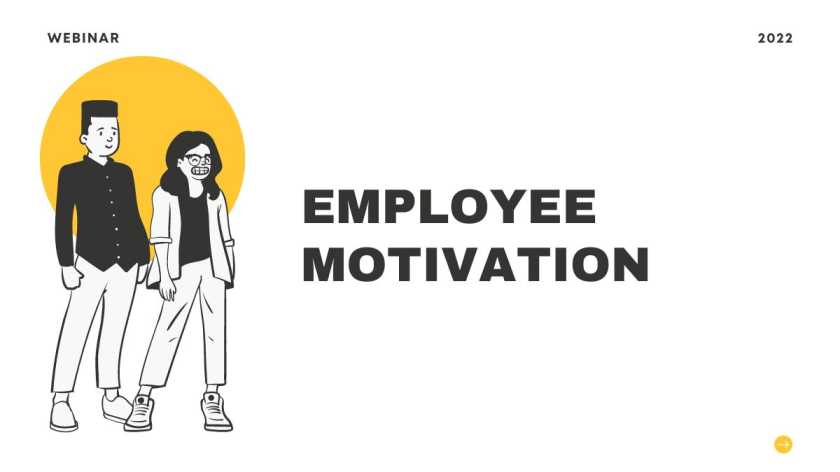Getting into the depth and psychology of motivation, as an employee, is essential in today’s working environment. Motivation is the driving force that inspires individuals to put extra effort toward their goals and complete the objectives of the organisation they are associated with.
Employee motivation is impacted by a variety of internal and environmental factors, unique to each individual. Let us delve deep and discuss the fundamentals, how to motivate employees and the scientific theories that support them.
The Fundamentals of Employee Motivation
Motivation is widely divided into two categories — intrinsic and extrinsic.
Intrinsic motivation stems from internal objectives such as personal development or a sense of accomplishment, on the other hand, extrinsic motivation is impacted by external stimuli such as rewards or recognition. The challenge for employees as well as for organisations is to find the appropriate balance between intrinsic and extrinsic motivating factors.
How to Motivate Employees?
Here are the factors, that influence the employee motivation criteria:
- Recognising individual differences: This plays a crucial role in employee motivation. Gallup’s research indicates that understanding these differences and personalising motivation strategies can show up to a 7-18% increase in employee performance.
- Establishing a motivational work environment: The workplace has a tremendous influence on employee motivation. According to a University of Warwick research, Google's offices, which are noted for their innovative and user-friendly design, help to enhance staff happiness and productivity by 37%.
- The role of leadership in employee motivation: Leadership is a critical factor for creating a motivating workplace. According to Gallup's survey, managers account for 70% of the variation in employee engagement. Effective leaders inspire and push their team members, resulting in a more engaged and productive workforce.
- Struggles and solutions: Motivation is crucial for corporations, yet it may be challenging to achieve. Regular feedback, open communication, and acknowledging individual accomplishments are critical techniques for overcoming these obstacles.
Various Scientific Theories Behind Employee Motivation
Herzberg’s Two-factor Theory
In the year 1959, psychologist Frederick Herzberg proposed a theory that distinguishes between two types of factors that impact employee motivation:
- Hygiene factors are aspects of the workplace which, when absent, can contribute to discontent among employees. These considerations include compensation, working conditions, corporate rules as well as interpersonal interactions.
- In contrast, motivators are factors that, when present, contribute to job satisfaction and motivation. They include acknowledgement, accomplishment, accountability, advancement and the nature of the task itself.
Maslow’s Hierarchy of Needs
This theory was proposed and established by a psychologist named Abraham Maslow, in 1943. It suggests that there is a hierarchy of needs for individuals, which must be satisfied in a specific order. The hierarchy consists of the following five levels:
- Physiological needs – fair compensation that will help in survival
- Safety needs – job security and personal well-being
- Belongingness and need for love – harmonious relationship with colleagues
- Esteem needs – inculcating self-confidence through recognition and advancement opportunities
- Self-actualization needs – opportunities to realise the full potential of self for personal growth and development
According to Maslow, individuals are motivated to fulfil these needs in a sequential order, with higher-level needs becoming significant only after lower-level needs are satisfied.
Hawthorne Effect
The Hawthorne effect, named after a series of social experiments, as a part of an employee motivation project, on the impact of physical conditions on productivity at Western Electric's factory in Hawthorne, Chicago, in the 1920s and 1930s, was first described by Henry Landsberger in 1958 after he noticed that some people worked harder and performed better when researchers were watching them.
Today, the Hawthorne effect is best understood as a rationale to make organisations understand the need to offer employees precise and meaningful feedback and praise. It is opposed by the presence of results-driven working settings that provide complete independence and prioritise performance and deliverables over the management of employees.
Expectancy Theory
As per the expectancy theory developed by psychologist Victor Vroom in the 1960s, employee motivation depends on 3 factors — expectancy, instrumentality and valence. According to this theory, individuals are driven to work hard when they feel their efforts will result in positive consequences or rewards.
Self-Determination Theory (SDT)
Psychologists Edward Deci and Richard Ryan contributed to the establishment of this theory in the 1980s. It puts emphasis on the fact that individuals have three innate psychological needs:
- Autonomy refers to the need for free will and determination in decision-making.
- Competence refers to the need to feel effective, capable and accomplished.
- Relatedness refers to the need to feel the connection and support offered by others.
As a result, work environments that address these requirements promote intrinsic motivation in employees, which leads to enhanced engagement, contentment and well-being. You may do this by promoting autonomy, skill development and meaningful connections.
Apart from that, there are some other theories as well, such as the Three-dimensional Theory of Attribution, Theory X and Theory Y, and Theory Z, etc.
Final Words
Several positive psychology methods may be utilised in the workplace to promote crucial outcomes such as job stress reduction and increased motivation, engagement, and performance. Several empirical investigations have been undertaken in recent years to confirm the effectiveness of these interventions.
To achieve this goal, the Executive Certificate Programme for Strategic Chief Executive Officers, offered by IIM Raipur in association with Imarticus, is an excellent method to take your leadership capabilities to another level. This 12-month CEO course is specifically designed to educate you how you can think strategically, instil integrity and purpose, establish a high-performing team, effectively manage change, and execute with a growth mentality.









